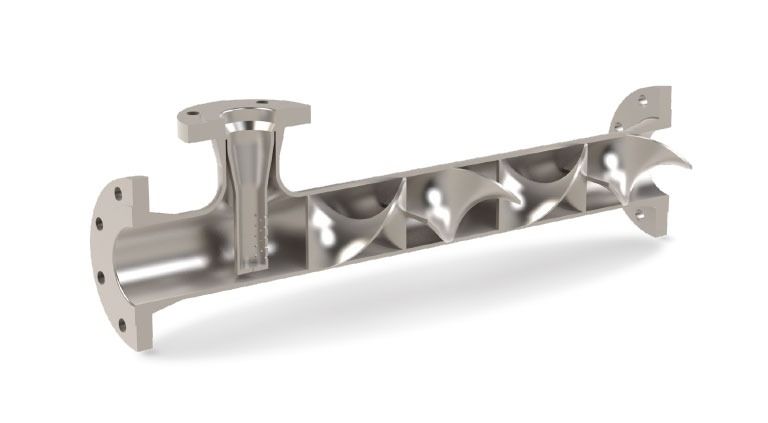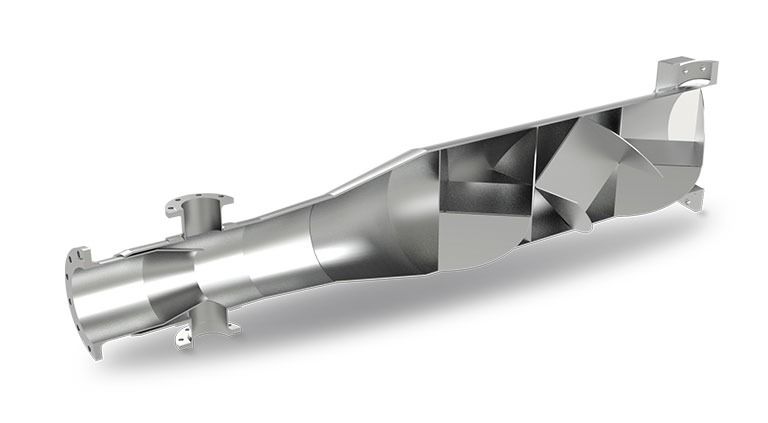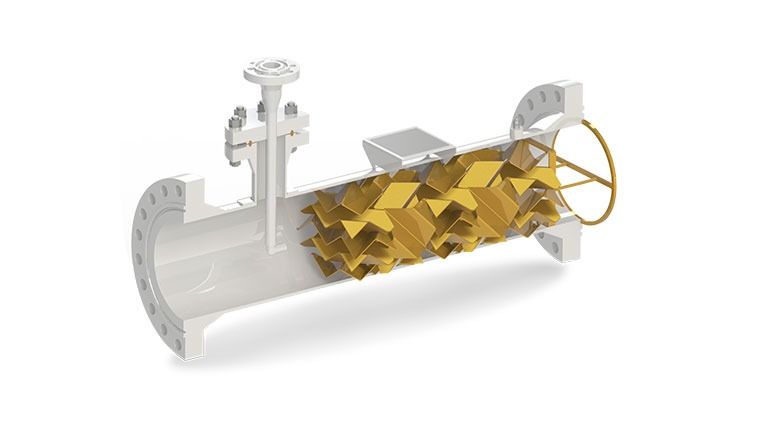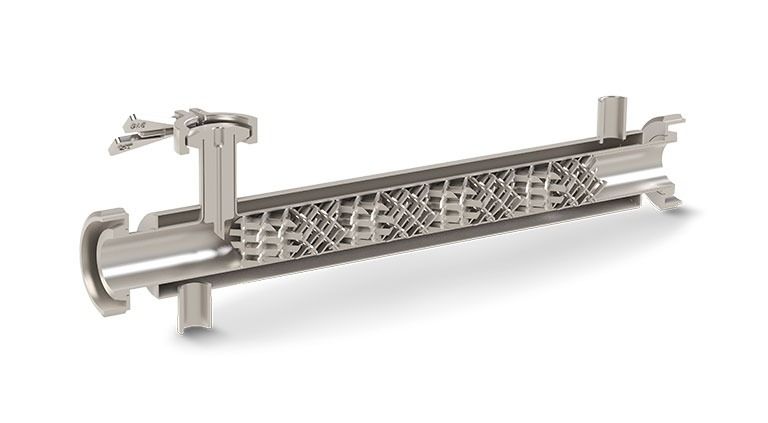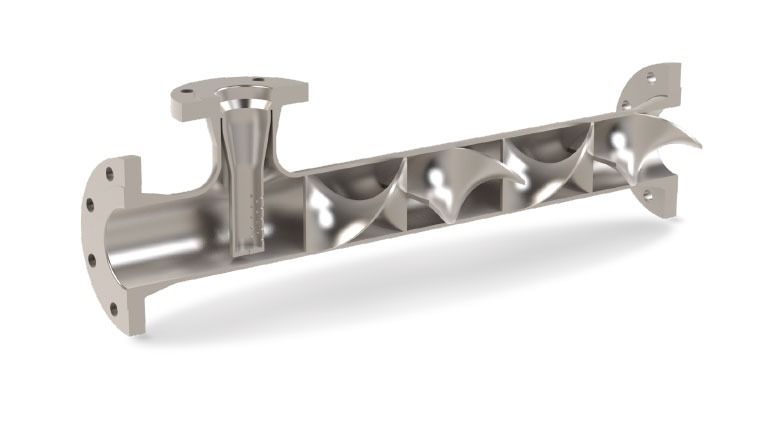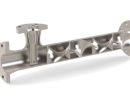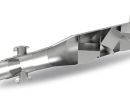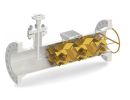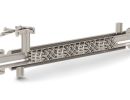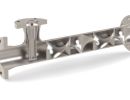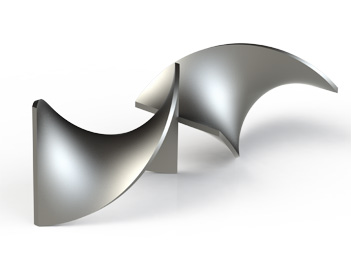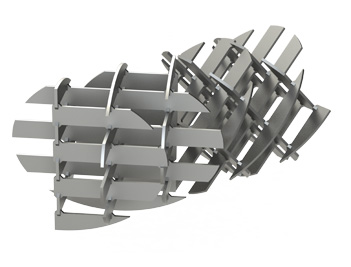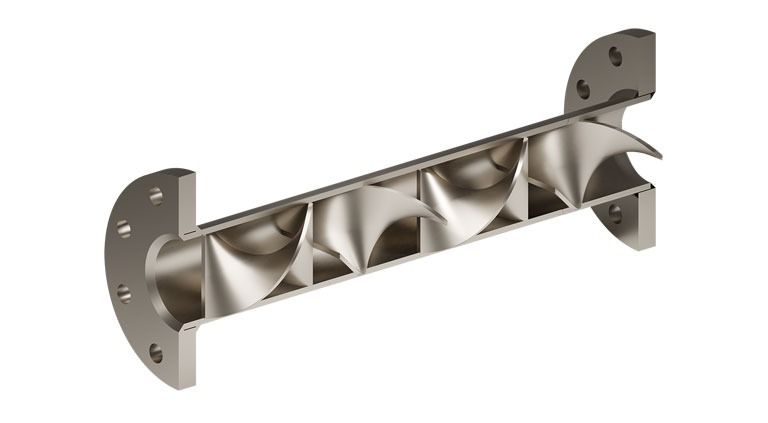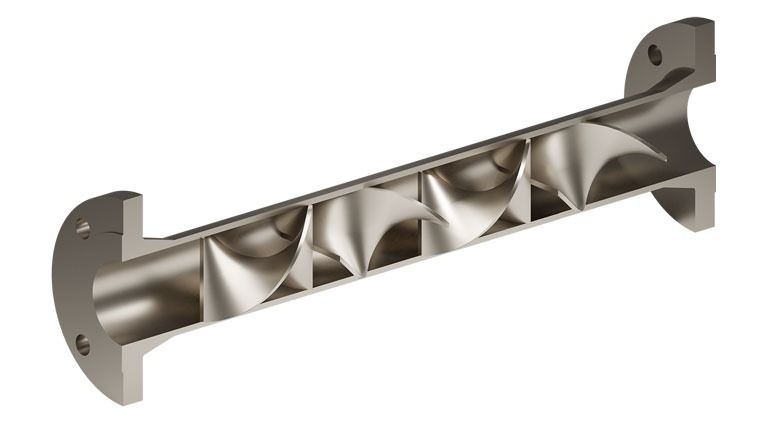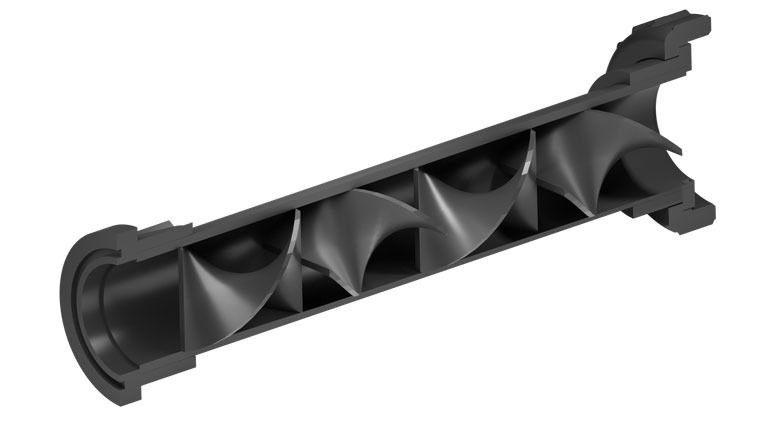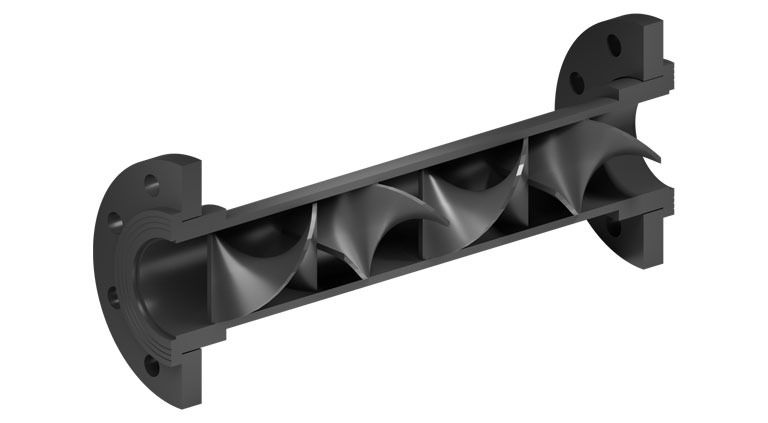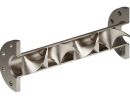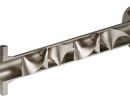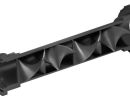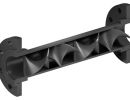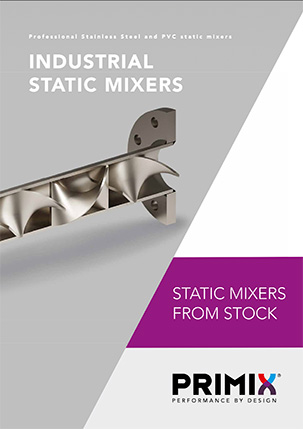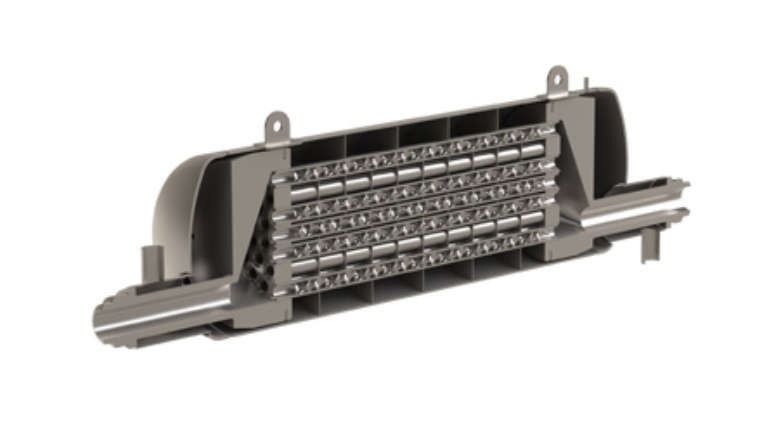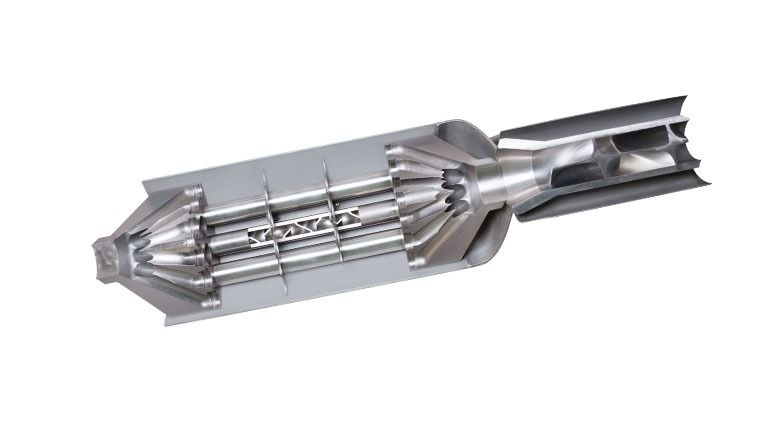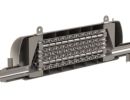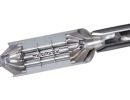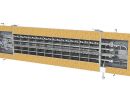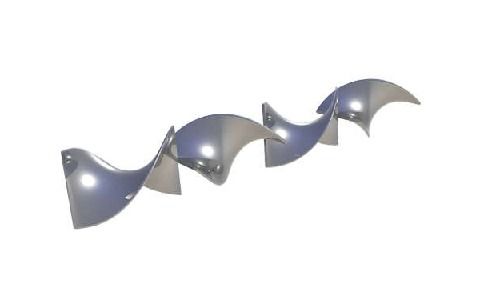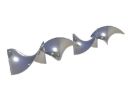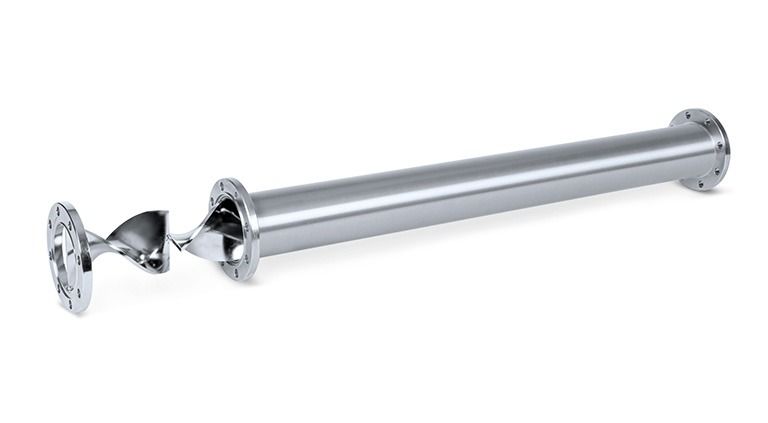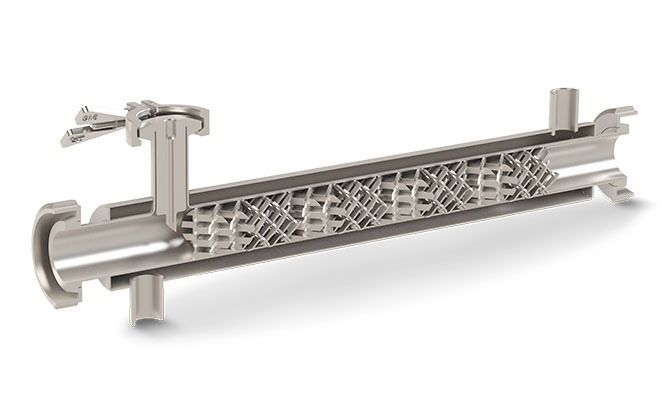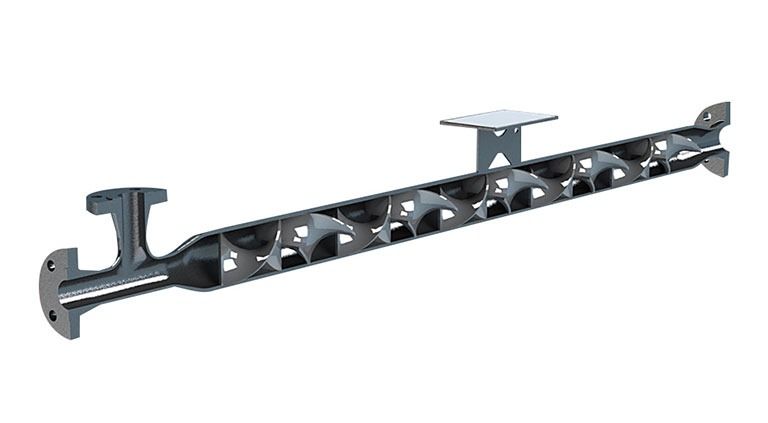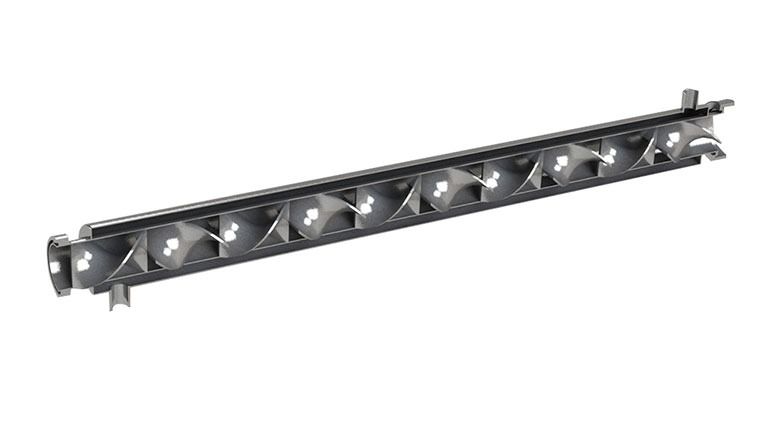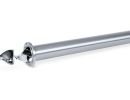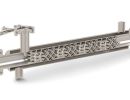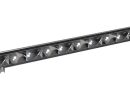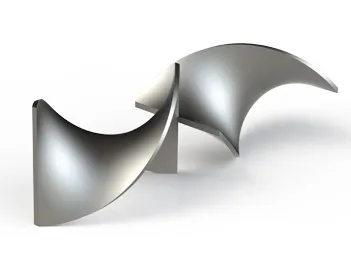Static mixers for mineral extraction processes

Static mixer - bespoke
PRIMIX custom made static mixers are fully customized inline mixers that are totally adapted to the use and process flow. The static tubular mixers can be dimensioned for almost all volume flows, densities, viscosities and substance specific characteristics.
No moving parts (motionless mixer), gaskets and shaft seals
Low energy consumption
Maintenance free and no risk of leakages
Predictable homogenisation
Basic features
Static mixers – tubular mixer or motionless mixers are suitable for:
• Liquids – mixing liquids
• Mixable liquids, such as mixing water and alkali
• Non mixable liquids, such as mixing water and oil
• Liquid – gas mixing, such as water and CO2
• Gas – Gas mixing, such as Flue gas and ammonia
Mixing liquids and gases during a continuous process
With the PRIMIX static tubular mixer you can create a homogeneously distributed mixing of liquids and gases in a continuous process. This takes place entirely without moving parts which means there are no extra power or mechanical elements required. For this reason static mixers are also called motionless inline mixers. The lack of moving parts makes the PRIMIX static mixers very low maintenance, and process-technically extremely safe components.
Simple to clean - static tubular mixers
A PRIMIX static mixer is very simple to clean in a CIP cycle and depending on the process requirements the process can be done totally sanitary/sterile/aseptically. For static mixers with demountable mixer elements the cleaning can be done outside the tube. This can be very useful when processing extremely viscous media. Read more about sanitary mixers.
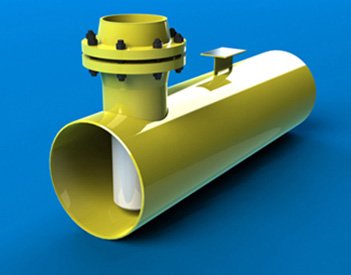
Low energy consumption
In industrial applications liquids and gases are moved through pipelines. The energy needed for this, in the form of pressure, is generated by a pump or compressor. Static mixers are very often fitted into these pipes and the components that need to be mixed or dispensed are added to the main flow directly before the mixer. The static mixer uses energy for mixing the components. This energy emerges as a certain pressure drop across the apparatus and the pressure is maintained by the pump or compressor. Energy consumption can be a significant cost for a process. Besides the homogeneity PRIMIX also calculates the expected fall in pressure beforehand, so that an optimal design is created with a very favourable –indirect– energy consumption.
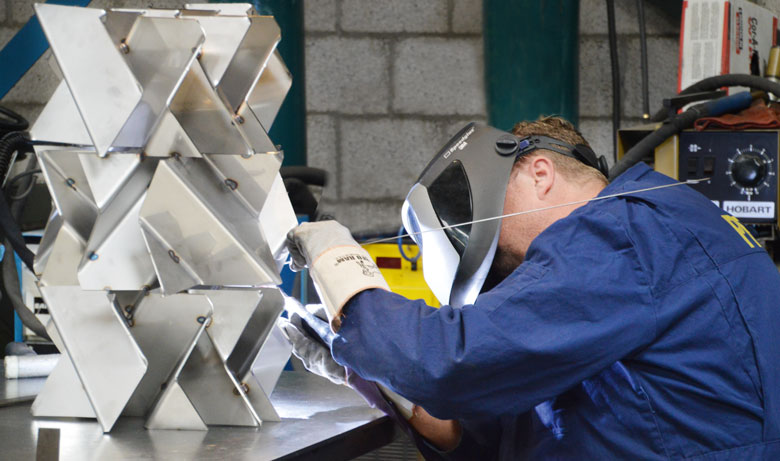
Motionless mixers are maintenance free
What happens to the maintenance schedule after placing a PRIMIX static mixer or heat exchanger inside a process? To be very honest there is no schedule. Because the well thought out and maintenance free design, PRIMIX do not need one. On the other hand service at PRIMIX is at the highest level. For possible future mixer adjustments or for the calculation of processes PRIMIX is more than happy to assist you.
Applications
Static mixers have a very wide range of application within various kinds of industries and are therefore very flexible. In general applications such as technical homogeneous mixing, extraction, washing, reacting, cooling, mixing of viscous media and heating are the most common. But of course other less common applications are also possible. The various media to be mixed or treated are described under the menu item: industries, on the website.
More information about specific media can be found here: static mixers for chemical processes, static mixers for processing polymers and fibers, static mixers for food and drinks, static mixers for water treatment, static mixers for petrochemical, static mixers for pharmaceutical industry, static mixers for BIO technologies
Mixer design
At PRIMIX design is more. It includes the engineering and thinking through the process with the client. Clearly defining the relevant parameters and where necessary daring to ask critical questions. This with the aim of obtaining maximum performance in the process. The intended design is entirely calculated in our own PRIMIX Dynamics software and afterwards is designed in SolidWorks®. The design instructions and calculations are based on strict criteria formulated in the current industrial design standards for high pressure devices. Read more about the PRIMIX design perspective.
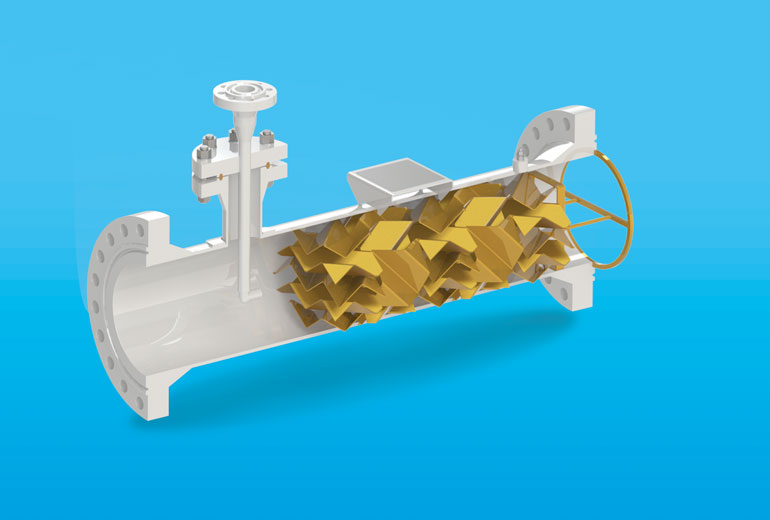
Basic segment shapes of static mixers
Inside the PRIMIX static mixer design four basic segment shapes are used; the Spiral/helical shape, the Quatro shape, the V-shape and the X-shape. More segments form one strand of elements that are placed inside a tube. The attachment of the element strands can take place by means of high-quality welding or soldering techniques, but the elements can also be put in as demountable items. The cleaning of these static tubular mixers can take place totally externally. This can be very practical when processing extreme viscous media.
Characteristics of the mixing elements
Each element has process specific characteristics and depending on the process and the flow diameter a certain type of element will be chosen. Below you will find a short explanation of the segment shapes. You can contact PRIMIX for more information about the segment shapes that have been used in the static mixers.
PMS mixing element:
PMS mixing element
- Standard screw, helical or spiral shaped mixing element. (comparable to Kenics design)
- For static mixers with a diameter of up to approx. 160 mm
- Suitable for basic mixing applications, liquids and gas.
PMQ mixing element:
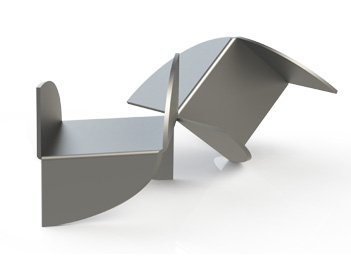
PMQ mixing element
- Quatro shaped mixing element design
- Performances equal to PMS
- For static mixers with a diameter of approx. 160 mm to infinity
- Suitable for basic mixing applications, liquids and gas.
PMX mixing element:
PMX mixing element
- X-crossed type mixing element design
- Suitable for static mixers of all sizes
- Relative high pressure drop and not totally free from blind spots
- Very suitable for high viscosity mixing
- Very good mixing and dispersion – for a very wide range of viscosity
- Reduction of product degradation
- Provides for a compact design of the static mixer
- Suitable for the mixing of sensitive products, with minimal friction tension
- No deposits or accumulation of materials because of cross mixing.
PMV mixing element:
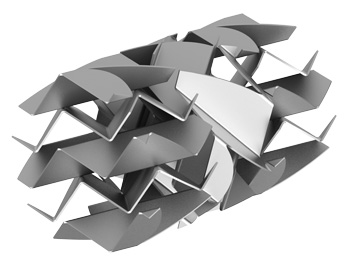
PMV mixing element
- V shaped mixing element design
- For static mixers with a diameter of approx. 50 mm to infinity
- Very suitable for mixing gases or with large contact surface, mostly suitable for gas, but also for liquids
- Suitable for large tube diameters
- Suitable for short mixing lengths
- Minimal space required for mixing or dispersion
- Quick mass transfer through continuous renewal of the interfaces.
Elements provide turbulent or laminar mixing
Depending on the element chosen, mixing can be divided into turbulent and laminar. In case of turbulent mixing we are talking about mixing substances where the viscosity is watery or slightly higher. The flow speeds are relatively high. Radial mixing occurs relatively often, and a technical homogeneous mixture has already been obtained in a short section. Laminar mixing occurs with substances with a high to very high viscosity. The speeds are low and the pressure drops are high. Radial mixing hardly ever occurs. The mixing effects are concentrated around the transition of the mixing elements. There the two layers are forced to mix and then forced into each other so that four layers occur, and so on. At the menu item 'operating principle' you can read more about turbulent and laminar mixing.
Technical specifications
The PRIMIX inline static mixers can, among others, be produced from the following materials:
- (Low temperature) carbon steel and low alloyed steel, for example A106 Gr. B, A333 Gr. 6, A335 Gr. P11, etc.
- Stainless steel, e.g. 316L(1.4404), 304L(1.4307), 321(1.4541), 316Ti (1.4571), etc.
- PTFE or glass (glazed) covered carbon steel or stainless steel
- Steel with fusion bond coatings or halar coating
- Duplex & super duplex (1.4462)
- Exotic materials such as: alloys, Hastelloy®, titanium, nickel, Incoloy®, alloys
- Glass fibre reinforced synthetic materials (GRP) with a chemical barrier of uPVC, cPVC, PE covering
- Synthetic materials, e.g. uPVC, cPVC, PP, HDPE, PVDF, PTFE
- Silicate glass
Surface finish static mixers:
Surface finish static mixers
The surface of the static mixers can be finished, treated or cleaned to specification. A number of treatment techniques are:
- Staining and passivating
- Grinding & glass-grit blasting or sandblasting
- Honed finish for a perfectly smooth surface
- Electrolytic polishing
- Chromium plated
- Ultrasonic cleaning
Applied flanges and connectors:
Applied flanges and connectors
The static mixers can be provided with various types of flanges and connectors. The connection will depend on the process, the tube diameter and the desired seal.
Connector type (more available on request)
- Bevelled weld ends ASME B16.25
- EN1092‐1 flanges. All types and pressure classes
- ASME B16.5, B16.47 flanges. All types and pressure classes
- Loose flanges and sleeves for plastic construction materials
- Sanitary flanges, e.g. DIN11851, bio-connect, tri‐clamps, aseptic DIN11864, SMS
- Thread ends, e.g. union joints, Swagelok®
Injectors:
Injectors
In processes in which the mixing ratios are wide apart from each other or in which physical material properties vary greatly, it is important to add the additive to the main flow via an injection unit. One possibility could be a centre line injection, but also injectors in the shape of a clarinet are interesting; the many possibilities can also be supplied as a demountable version. The advantage of an injector is that the additive is injected into the main flow at an ideal point, before the first mixing element, so that the mixing action takes place significantly more efficiently. PRIMIX can advise you in choosing the most ideal version for your application.
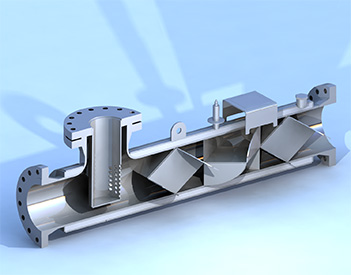
Downloads
Brochure and leaflet
![]() Static mixer leaflet (English)
Static mixer leaflet (English)
![]() Staattiset sekoittimet ja lämmönvaihtimet (Suomalainen)
Staattiset sekoittimet ja lämmönvaihtimet (Suomalainen)
![]() Mieszacze statyczne i wymienniki ciepła w jednym (Polski)
Mieszacze statyczne i wymienniki ciepła w jednym (Polski)
![]() Static mixer leaflet (Taiwanese)
Static mixer leaflet (Taiwanese)
Case study data sheets
![]() #50 Static mixer for H2SO4 Dilution
#50 Static mixer for H2SO4 Dilution
![]() #51 Static mixer for biodiesel production
#51 Static mixer for biodiesel production
![]() #53 Polyelectrolyte dosing system
#53 Polyelectrolyte dosing system
![]() #54 Cip static mixer for food homogenization
#54 Cip static mixer for food homogenization
![]() #55 BS&W / Custody transfer mixing
#55 BS&W / Custody transfer mixing
![]() #57 Multi-stage inline dosing system
#57 Multi-stage inline dosing system
Certificates
Quote request

Static mixer - from stock
The QDS (Quick Time Delivery System) static mixers can be delivered within a few days following your order and at very competitive prices. With QDS static mixers PRIMIX delivers the advanced technology of bespoke static mixers in standardized variants.
Stainless Steel 316L or PVC
More than 10,000 variants, DIN and Inch sizes
Delivered within a few days
Tailored to your flow rates
Standardised static mixers with a short delivery time
The QDS static mixers are available in more than 10,000 variants. These mixers from the QDS series are, within a short time frame, assembled from loose stock components, whereby the same engineering knowledge is applied as in the custom-made PRIMIX mixers.
Static mixers delivered within 48 hours
QDS mixers can, where necessary, be delivered within 48 hours. As with the custom-made mixers all QDS mixers are fully matched to the process and designed according to the specified process parameters.
Phone or mail for a speedy delivery.

Heat exchangers
The PRIMIX spiral shaped mixer element is the basis of the heat exchangers which can be used for the inline heating and cooling of products. Because of the sophisticated construction, the PRIMIX heat exchanger takes a unique position between the current shell and tube heat exchangers. All PRIMIX heat exchangers are designed and produced to client specifications. The heat exchangers are available for the treatment of particularly high viscosity liquids.
Special manifold - mixer connection possible, resulting in true plug flow
Improved heat transfer - which results in 30 - 40% less weight
Lower pressure drop in product and on the side of the service liquid
Lower volumes and shorter residence times
Basic features
Spiral heat exchangers - faster refresh, better mixing
The design of the spiral shaped element naturally takes care of an increased heat transfer - by up to a factor 3. This is caused by the strong radial flow which causes an increase in the refresh rate on the inner walls of the process pipe.
20 to 100% more heat transfer
The applied Advanced Connection Technology (ACT), between the tube and mixing elements has a resistance to heat transfer which is equal to the resistance of the base material of the tube and element. Due to this characteristic, the surface area of each mixing element starts to behave like an additional heat-exchanging surface, which in comparison with the conventional heat exchangers results in a 20 to 100% improved heat transfer.
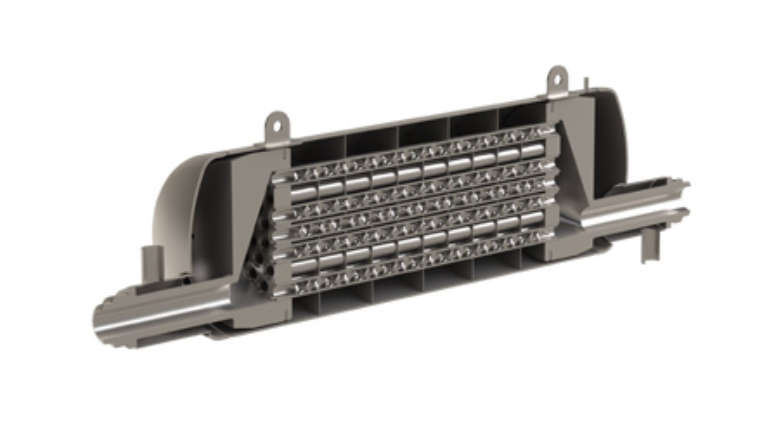
Static mixer heat exchanger is suitable for challenging media for example
If a standard pipe and plate heat exchanger is no longer working properly, the heat exchanger spiral elements come into the picture. Stretching and folding over the liquid layers has a positive effect on the heat transfer.
Some applications for specific industries:
Heat exchanger for viscous liquids like polymers
- Cooling a polymer to a constant temperature in the PET mill feed
- Cooling of hot melt
- Heating
- Polymer heat exchanger for mill
Heat exchanger for food
- Heating and cooling foods mildly
- Very suitable for viscous process media such as starch
Heat exchanger with an insulating sheath
The heat exchangers can be supplied optionally with an insulating sheath. The heating and/or cooling of liquids in a continuous process is a frequent operation in the chemical industry but also in the food industry.
Design
The static mixer heat exchanger
The reliable alternative to a plate heat exchanger, scraped heat exchanger, tube heat exchanger or spiral shaped tube heat exchanger.
The following types of stationary heat exchangers can be distinguished:
-
Plate heat exchanger
-
Tube heat exchanger
-
Spiral shaped tube heat exchanger
-
Static mixer heat exchanger
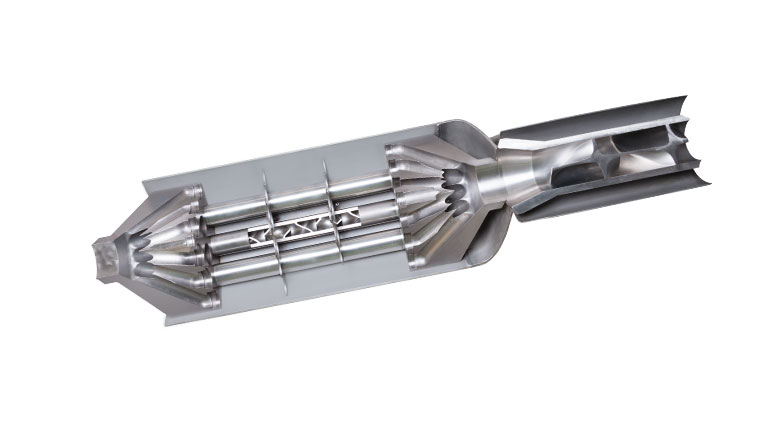
Usability of heat exchangers; working pressure, process temperature and viscosity
The usability of each type of heat exchanger is largely determined by the applied working pressure, the process temperature and the corresponding viscosity of the process medium. The desired capacity is achieved by choosing a certain construction size or by linking several heat exchangers in parallel.
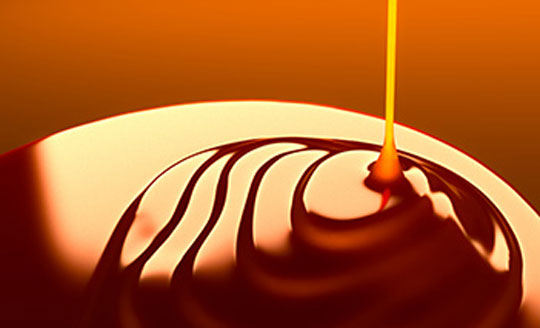
The heat exchanger types mentioned above are placed in order of increasing usability, the heat exchanger with static mixing elements is the most usable.
Is a static mixer heat exchanger better for viscous media than a plate heat exchanger?
In applications where it is about the thermal treatment of viscous process media and processes where, for example, starch can be gelatinized, a system with a wider applicability should be chosen. . The plate heat exchanger in particular, is limited in the allowable work pressure. Pressures above about 6 bar are too high for this type, while in processes where long heating and cooling down schedules are included, the limit is reached quickly.
Better heat exchange than spiral shaped and tube heat exchanger because of the lack of tunnel effects
The applicability limits of the tube heat exchanger are mainly during the cooling of viscous process media, where - as a result of the tunnel effect occurring by fouling product - an insulating layer of product is formed on the inner wall, which can severely impede the transfer of heat. In addition, the remaining insulating product layer may have a negative effect on the quality of the final product. The spiral shaped heat exchanger has similar problems in this field of application to the tube heat exchanger. The static mixer heat exchanger has in relation to the above mentioned heat exchangers the great advantage that the temperature differences over the cross section of the flow surface are reduced, so that no insulating layer is formed and therefore this type is very useful for heat exchange in process media with a high viscosity.
More information about the application of the static mixer heat exchanger
Further applications of the static mixer heat exchangers can be found in our case studies data sheets and under the menu item industries.
It’s all-in the design
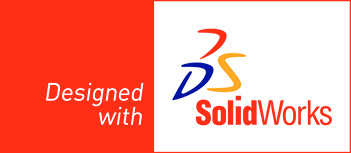
At PRIMIX design is more. It includes the engineering and thinking through the process with the client. Clearly defining the relevant parameters and where necessary daring to ask critical questions. This with the aim of obtaining maximum performance in the process . The intended design is entirely calculated in our own PRIMIX Dynamics software and afterwards is designed in SolidWorks® . The design instructions and calculations are based on strict criteria formulated in the current industrial design standards for high pressure devices. Read more about the PRIMIX design perspective.
Technical specifications
Product range static mixer heat exchangers
The PRIMIX heat exchangers can be produced, for example, from the following materials:
- (Low temperature) carbon steel and low alloyed steel, for example A106 Gr. B, A333 Gr. 6, A335 Gr. P11, etc.
- Stainless steel, e.g. 316L(1.4404), 304L(1.4306), 321(1.4541), 316Ti (1.4571), etc.
- Duplex & super duplex (1.4462)
- Exotic materials such as: alloys, Hastelloy®, titanium, nickel, Incoloy®
Surface finish heat exchangers

The surface of the static mixer heat exchanger can be finished, treated or cleaned to specification. A number of treatment techniques are:
- Staining and passivating
- Grinding & glass-grit blasting or sandblasting
- Honed finish for a perfectly smooth surface
- (Electro) polish
- Chromium plated
- Ultrasonic cleaning
Applied flanges and connectors
The static mixer heat exchanger can be provided with various types of flanges and connectors. The connection will depend on the process, the pipe diameter and the desired seal.
Connector type (more available on request)
- Bevelled weld ends ASME B16.25
- EN1092‐1 flanges: type 01, type 11, etc.
- ASME B16.5, B16.47 flanges. FF, WN RF, RTJ, etc.
- Loose flanges and sleeves for plastic construction materials
- Sanitary flanges, e.g. DIN11851, bio-connect, tri‐clamps, aseptic DIN11864, SMS
- Thread ends, e.g. union joints, Swagelok®
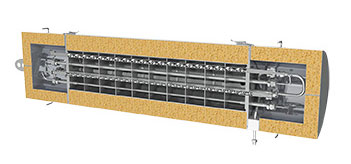
Options and implementations of the heat exchanger
- Demountable
- Honed inflow sides
- Polished
Downloads
Brochure and leaflet
![]() Static mixer leaflet (English)
Static mixer leaflet (English)
![]() Staattiset sekoittimet ja lämmönvaihtimet (Suomalainen)
Staattiset sekoittimet ja lämmönvaihtimet (Suomalainen)
![]() Mieszacze statyczne i wymienniki ciepła w jednym (Polski)
Mieszacze statyczne i wymienniki ciepła w jednym (Polski)
![]() Static mixer leaflet (Taiwanese)
Static mixer leaflet (Taiwanese)
Certificates
Quote request

Mixer internals
PRIMIX manufactures and supplies products that vastly improve the heat transfer in heat exchangers. Pipe heat exchangers are applied in the industry for cooling or heating products, however, with a viscous product the heat exchanging ability of this type of heat exchanger can deteriorate significantly and therefore usage becomes uneconomical. By using mixer element strands the capacity of these systems can be improved. PRIMIX manufactures mixer element strands but also twisted tapes or ribbons.
For increasing the system heat transfer capacity
Mixer element strands from 4 mm diameter
Twisted tape up to 100 mm diameter
Technical specifications
Mixer element strands
When cooling or heating highly viscous products, the risk of tunnel effects is high. Because of the formation of a boundary layer, the product near the inner wall almost comes to a stand still; the consequence is that the heat transfer is restricted. There is a real chance that because of fouling the exchanger will continue to clog up with product. Due to the occurring differences in speed, there will also be a large residence time spread.
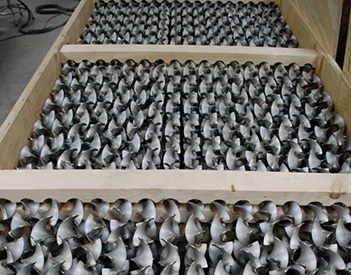
By applying PRIMIX mixer elements strands, the resulting boundary layer is reduced to a minimum; the result is that the stationary boundary layer is broken and there is a continuous replenishment and addition of new product, which will have a positive effect on the heat transfer. Also, the residence time spread will be better because the mixing improves. By using PRIMIX mixer elements strands the system pressure drop becomes larger; your feed pump must be suited for this naturally. Heat transfer improvements of 40 % with respect to an empty pipe are no exception.
PRIMIX manufactures mixer element strands from 4 mm diameter, and in the usual materials, such as the various types of stainless steel. Special versions, for which the inlet and outlet side of each mixing element is made with a sharp or rounded edge, are possible. Also, various surface treatments can be used.
Turned ribbon or Twisted tape
Twisted tape is a long strip of material of a defined diameter which is turned up into a spiral; it can be turned both left or right; this in contrast to PRIMIX mixer elements strands of which the rotation changes in fact after every 180 degrees. Also, the twisted tapes can be applied in order to increase the heat transfer, and can be supplied for both existing and new exchangers. Twisted tapes are manufactured to client specifications in our own production facility to a diameter of 100 mm in the standard types of material. Ask our specialists about the possibilities.

Sanitary static mixer
The PRIMIX sanitary static mixers are custom made mixers, suitable for use in the foodstuff, dairy, and drinks industry. With their sanitary design and 316L construction, they offer great performance in the field of mixing and homogenisation. The sanitary mixers can be dimensioned for virtually any volume flow, density, viscosity, and other specific product characteristics.
Maintenance-free mixers
Predictable homogeneity
CIP cleaned quickly and effectively
Very low pressure drops
Basic features
Sanitary static mixers are suitable for the following, and many other, applications:
Foodstuff production:
- Homogenising product temperatures after a heat exchanger in a production line for sauces.
- Controlled cooling and mixing of pastas and sauces.
- Mixing tomato concentrate and water into a sauce base with the desired viscosity.
- Temperature homogenization of curd cheese after heat exchanger.
- Marbling of products.
- Pasteurising and cooling sauces.
- Homogenising the temperature of chocolate after the tempering machine.
- Mixing colouring or flavouring into chocolate, fondant or marshmallow.
- Rework melters for margarine production lines.
- Mixing sugar-based syrups and water into a desired Brix value.
- But also: Producing CIP liquid.
Drinks production:
- Decreasing product degradation in juices by mixing in nitrogen.
- Carbonising by mixing in CO2.
- Mixing juice concentrates and water.
- Mixing coffee concentrates and water.
Dairy production:
- Pre-mixer for the homogeniser.
- Pre-mixer for spray tower.
- Mixing pieces of fruit into yogurt.
- Temperature homogenisation after a heat exchanger in ice production.
- As a heat exchanger in the UHT lines for viscous medical foodstuffs.
Read more about the applications in the applications tab.
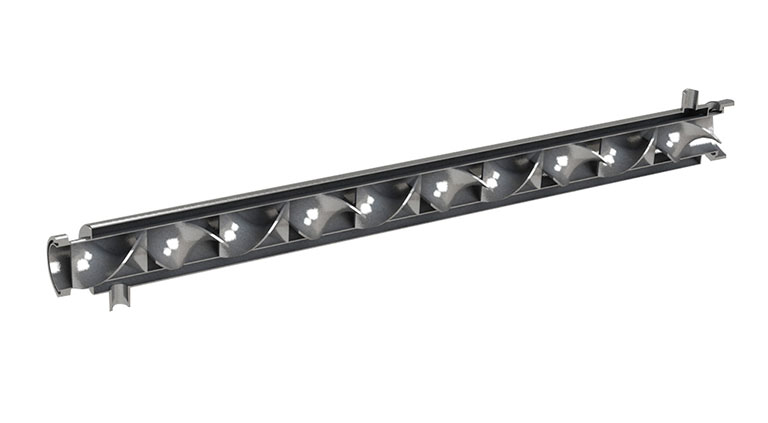
CIP cleaning
Within the foodstuffs industry, aspects like CIP cleaning, smooth and/or polished surfaces, and sanitary connectors are important for keeping germ counts as low as possible. Practice has shown that the use of PRIMIX static mixing elements and the increased speed of the product along the pipe wall, results in a significantly cleaner result after CIP cleaning, as compared to an empty pipe. The germ count afterwards is immeasurable.
The PRIMIX sanitary static mixers are easy to clean in a standard CIP or disinfection cleaning cycle. The mixers are fitted with removable mixer elements as standard, to facilitate any desired pipe inspection. This is very convenient, for example, when processing extreme viscous materials.
Retention of flavour and product characteristics – through rapid heating and cooling
Retention of flavour during pasteurisation and sterilisation processes is achieved by heating the product to a high temperature quickly, maintaining that temperature, and then cooling the product again relatively quickly. Good heat transference is essential to ensure the rapid heating and cooling. Static mixing elements ensure the continuous supply of new product to the contact surface, so that optimal heat exchange is achieved. With the sanitary static mixers, the sterilisation sections can be made significantly more compact while improving the efficiency.
Sanitary static mixers are maintenance free
What does the maintenance process look like after adding a PRIMIX static mixer to the process? To be very honest, there isn’t really a process to speak of. Simply because PRIMIX mixers require little to no maintenance at all.
Applications
Colouring and flavouring chocolate
One specific activity where the use of static mixers has proven very effective, is in mixing colouring and/or flavouring into white chocolate. In this process, a relatively small flow of colouring and/or flavouring is added to the chocolate flow. Due to the clever design, the additives are completely mixed in over the course of a very short installation length. This results in low loss of product and fewer cleaning activities. The same mixing principle is also applied to fondant or marshmallows.
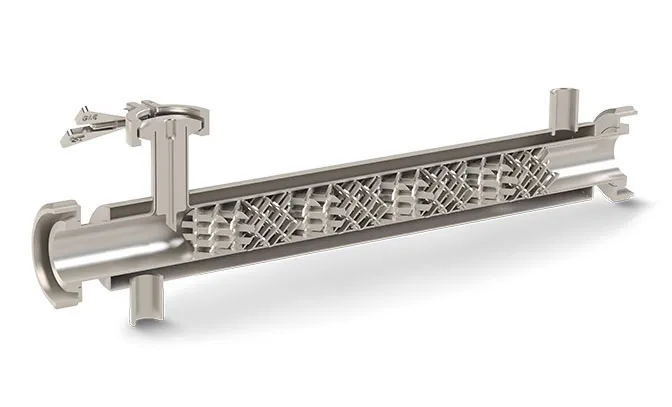
Reworking margarine
In the Benelux, many margarine installations operate a PRIMIX rework mixer. In the supply line towards the packaging installation, a relatively small margarine flow is fed back, so that it is on standby. In the event of a sudden stoppage in the packaging line, the full quantity of cold margarine (6°C) is put through the rework installation and returns readily melted to the supply tank. The PRIMIX systems with hot water or steam connections have fully proven their effectiveness as rework installations in practice.
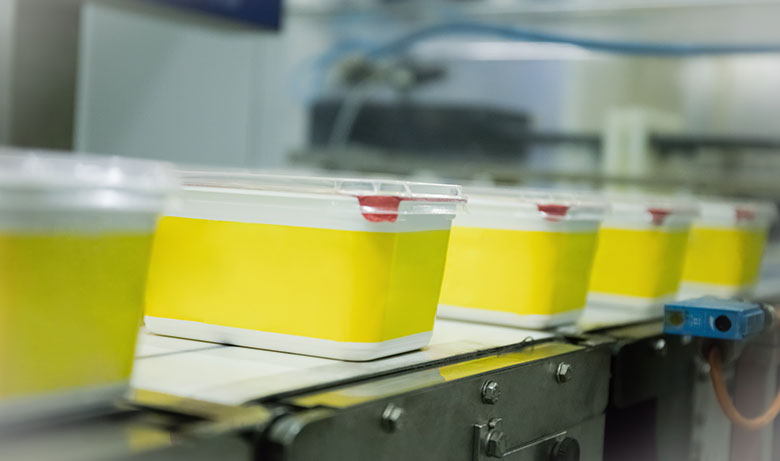
Improving temperature distribution in sauces and ice
Heat exchangers in production processes for sauces and ice have outgoing diameters of more than 50 mm. Because the products are syrupy (with high viscosity) a laminar flow profile arises in the output pipe. This means that at the centre of the pipe, the product is flowing much faster than it does at the edges. In consequence, the temperature measurements fluctuate, causing system controls to be unstable. Installing a PRIMIX sanitary static mixer will solve this issue. Due to good homogenisation, the product will have the same characteristics throughout, including consistent temperature distribution.
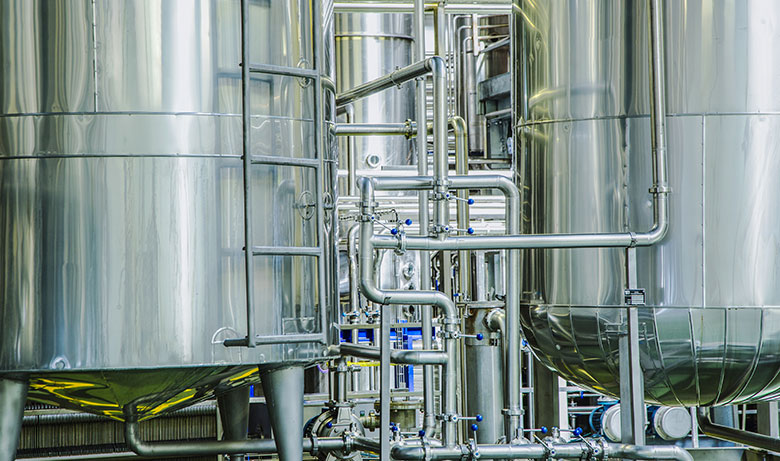
Making first class sauce bases
Many sauces begin their production process as a mixture of (tomato) puree concentrate which, together with water, is mixed to the desired viscosity. Whereby it is important that the mixture is perfect, otherwise the consumer will see colour and consistency variations. Today, PRIMIX static mixers are ensuring the production of first class sauce bases in many different production lines.
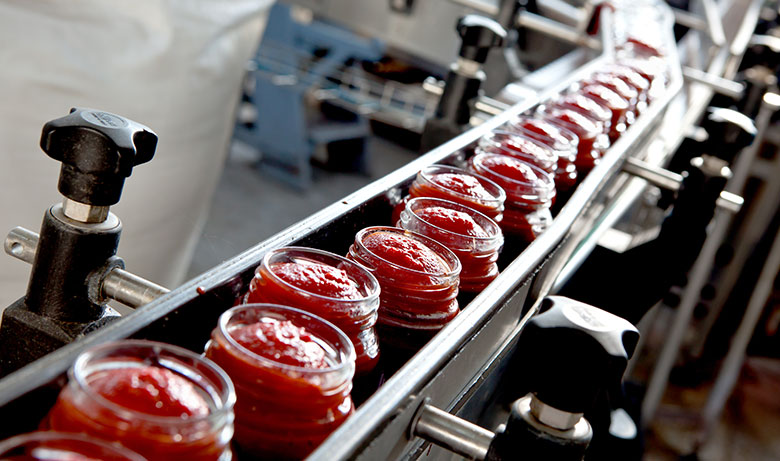
Pre-mix for a better homogeneity in milk
There is a lot more to modern milk production than simply milking a cow. For the right texture and consistency, milk is made smooth using a homogenisator. A PRIMIX sanitary static mixer in the supply line of the homogenisator ensures a perfect pre-mix, allowing the homogenisator to do its work even better.
Mixer design
Mixer design
At PRIMIX, there is more to the design of a sanitary static mixer. It encompasses engineering and thinking about the client’s process as a whole. Clearly determining the relevant parameters and, where necessary, daring to ask critical questions. This, with the aim of obtaining maximum performance in a mixing, heating, and/or cooling process. The intended design is calculated through completely in the PRIMIX Dynamics’ own software and then designed in SOLIDWORKS®. Read more about the PRIMIX static mixer design.
Type of mixing element
Within the sanitary static mixers, two types of mixing elements are used; the PMS screw type or helix element, and the PMX mixing element, also referred to as x-crossed type element.
PMS mixing element
PMS mixing element
-
Standard screw, helix or spiral shaped mixing element (comparable to Kenics design)
-
For static mixers with a diameter up to ±150 mm
-
Suitable for basic mixing applications, liquid and liquid gas solutions and used in heat exchangers
-
Due to the rounded sides of the element, suitable for mixing sensitive products that are prone to damage. Rounded sides are possible at the font and rear sides of the element, but also along the contour edge of the element
-
Electrolytic polishing of the element optional
PMX mixing element
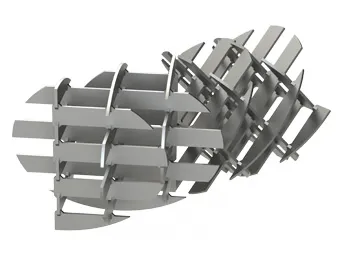
PMX mixing element
-
X-crossed type mixing element design
-
Available in many different dimensions
-
Very suitable for mixing highly viscous materials
-
Very good mixing and dispersion – for a wide range of viscosity
-
Ensures a compact design of the static mixer
-
Electrolytic polishing of the element optional
Turbulent or laminar mixing
Depending on the selected element, mixing can be divided into turbulent and laminar. In case of turbulent mixing, we mean mixing materials with a watery or slightly higher viscosity. The flow speeds are relatively high. There is a relatively high amount of radial mixing and within a short process a technically homogenous mixture is obtained.
Laminar mixing occurs with materials with a high to very high viscosity. Here, the speeds are lower, and the pressure drops high. Very little or no radial mixing occurs. The mixing effects are focused on the transition between the mixing elements. There, the two layers are forcibly mixed, creating four layers, and so on. At the menu option operating principle, you can read more about turbulent and laminar mixing.
Technical specifications
Mixer design
The PRIMIX sanitary static mixers can be manufactured from, among others, the following materials:
- Stainless Steel; 316L(1.4404) , 304L(1.4307), 321(1.4541), 316Ti (1.4571)
- PTFE (with FDA approval)
- PP Food grade
- Do you require specific materials? Please contact PRIMIX.
Surface treatment sanitary static mixers
Surface treatment sanitary static mixers
The surface of the sanitary static mixer can be finished, treated, or cleaned to specification. Generally, the casing and the internal mixing elements are supplied with a Ra < 0.8 with a Ra < 1.6 on the weld. Electrolytically polished mixing elements are available for more critical applications.
Applied flanges and connectors
Applied flanges and connectors
The sanitary static mixers can be fitted with various types of flanges and connectors. The connection will depend on the process, the pipe diameter, and the desired seals.
Connector type for sanitary mixers (more available on request)
- DIN11864 (The most sanitary connector)
- DIN11851
- Tri‐clamps
- SMS
Injectors:
Injectors
In processes where the mixing ratios are far apart or the physical material characteristics highly diverse, it is important to introduce the additive to the main flow through an injection piece. Think, for example, of a centreline injection, but injectors in clarinet shape are also interesting; the myriad possibilities can also be supplied in removable versions. The advantage of an injector is that the additive is introduced into the main flow at the ideal point before the first mixing element, making the mixing operation significantly more efficient. PRIMIX can advise you in selecting the most optimal installation for your application.
REGULATION 1935/2004
REGULATION 1935/2004
Since 27 October 2004, the European regulation is in effect for all materials that come into contact with food. For PRIMIX sanitary mixers, the regulation sets the following two main requirements:
- The materials used must be suitable for foodstuffs.
- The materials used must be traceable.
For the construction of sanitary mixers, PRIMIX uses available stainless steel sanitary components from first class manufacturers in the industry. The material stainless steel is included in Appendix 1 of the regulation (Materials with special requirements) and is generally accepted as a suitable material for foodstuffs and drinks.
We have safeguarded the traceability through EN10204 3.1 material certificates. These are recorded in the documentation bundle for the mixer.
If desired, PRIMIX will provide a compliance certificate.
Downloads
Brochure and leaflet
![]() Static mixer leaflet (English)
Static mixer leaflet (English)
![]() Staattiset sekoittimet ja lämmönvaihtimet (Suomalainen)
Staattiset sekoittimet ja lämmönvaihtimet (Suomalainen)
![]() Mieszacze statyczne i wymienniki ciepła w jednym (Polski)
Mieszacze statyczne i wymienniki ciepła w jednym (Polski)
![]() Static mixer leaflet (Taiwanese)
Static mixer leaflet (Taiwanese)
Case study data sheets
![]() #54 Cip static mixer for food homogenization
#54 Cip static mixer for food homogenization
Company
![]() Algemene verkoop- en leveringsvoorwaarden
Algemene verkoop- en leveringsvoorwaarden
Certificates
Quote request

 English
English  Deutsch
Deutsch  Español
Español  Français
Français  Nederlands
Nederlands 